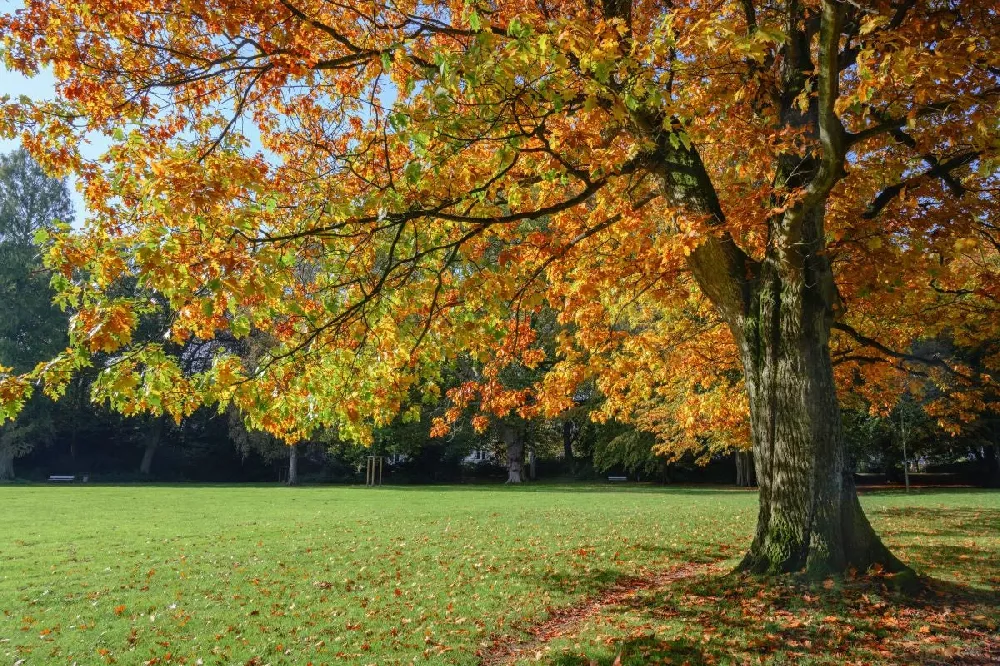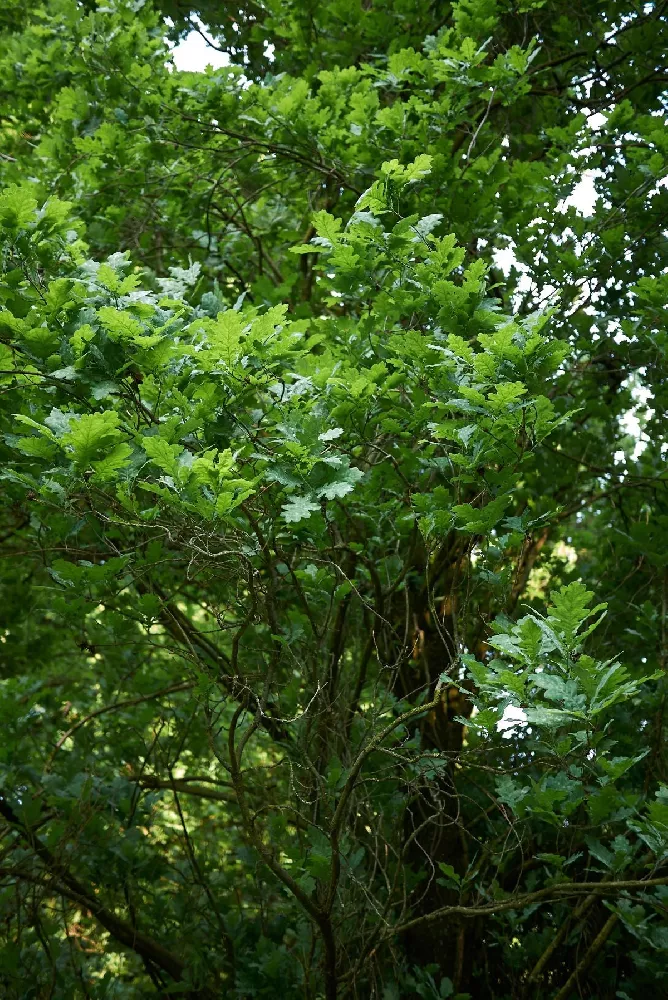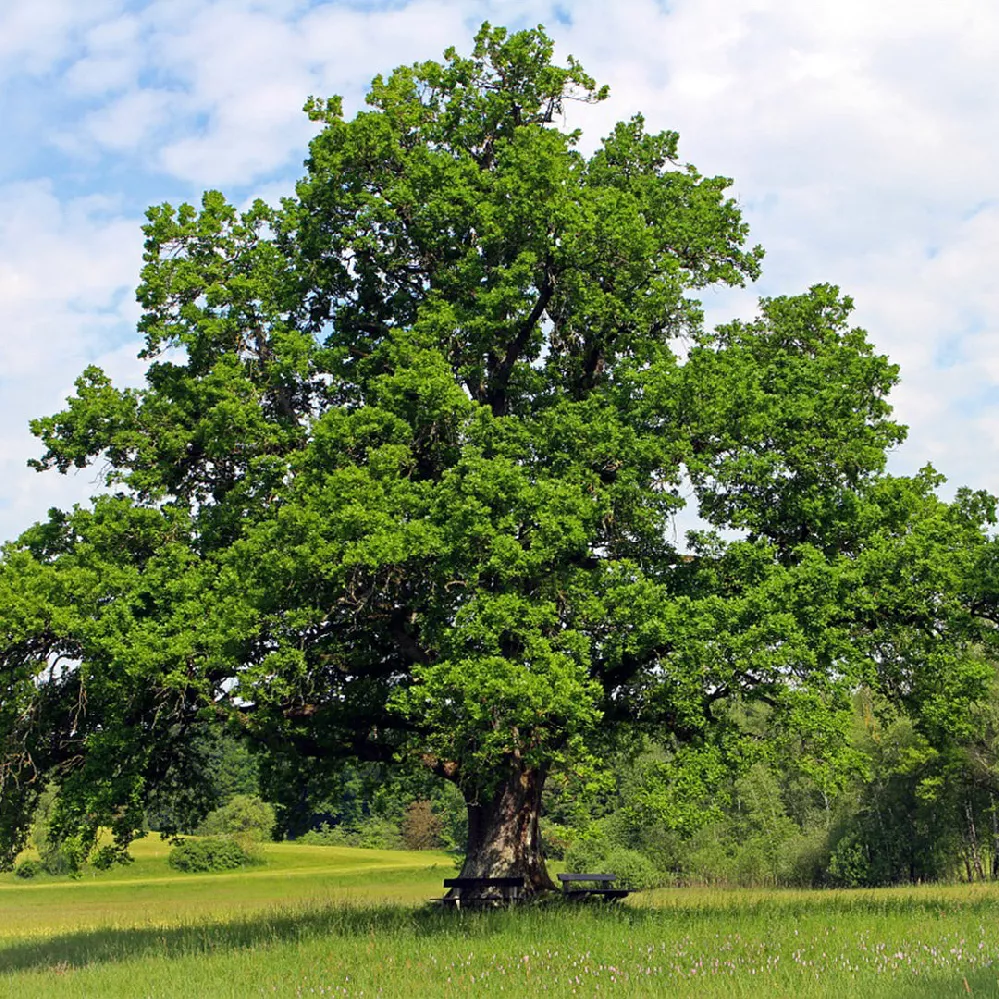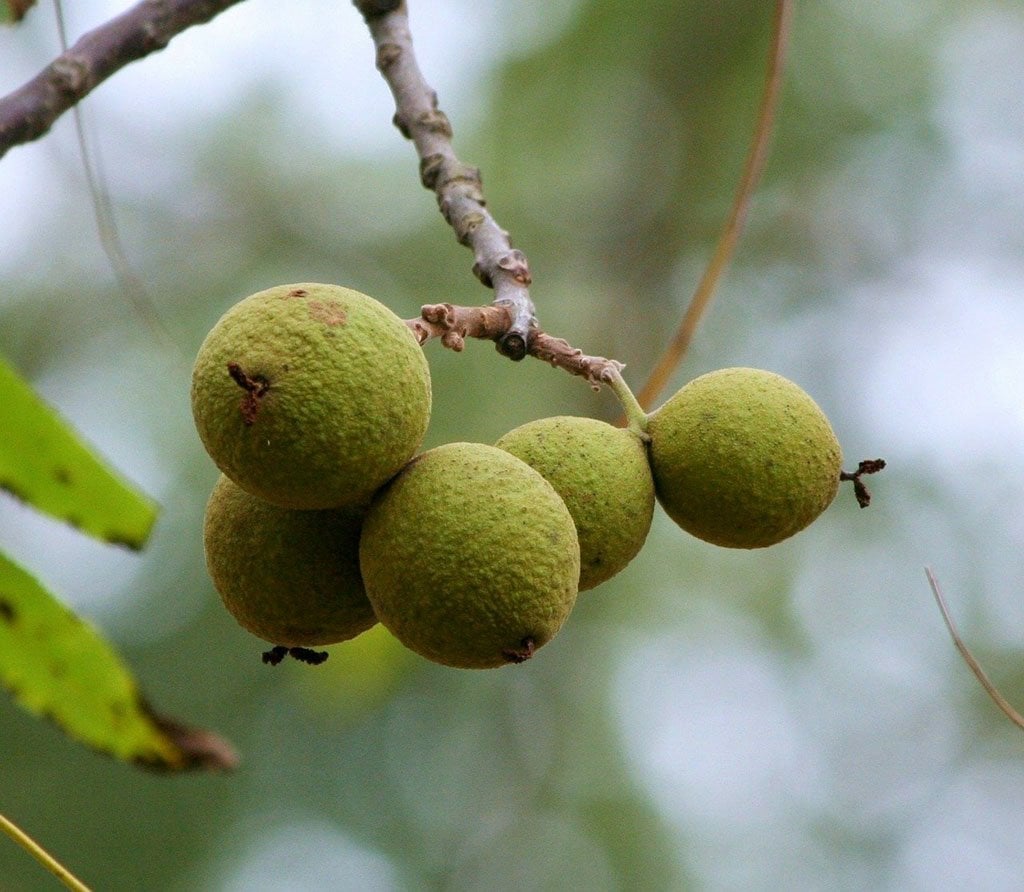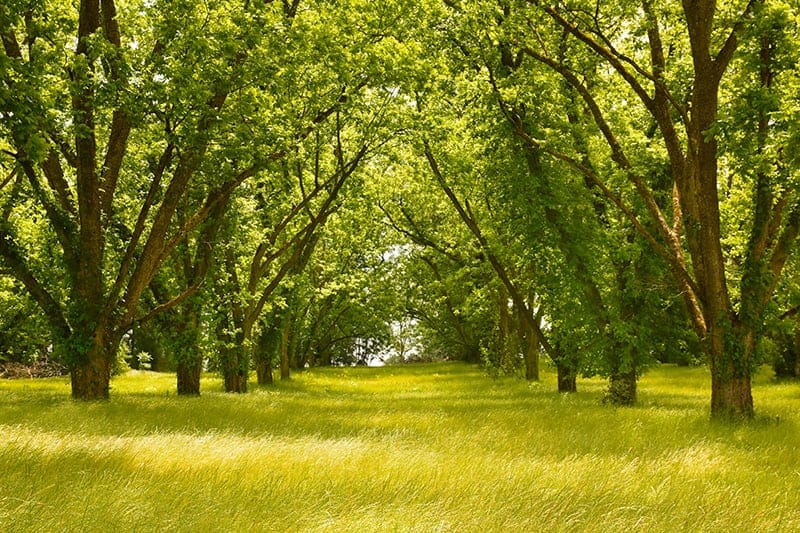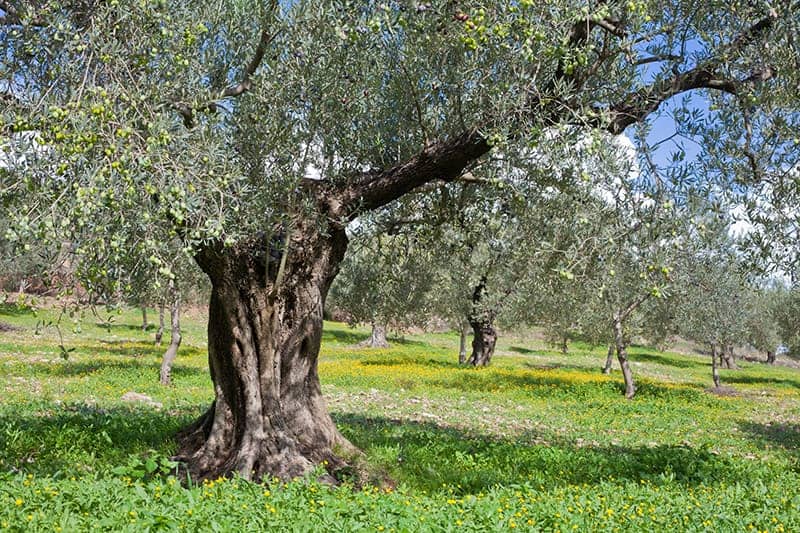- Home >
- Oak Trees
Oak Trees for Sale
Filters
Price Range
Growing Zones
Plant Type
Sunlight
Mature Height
Plant Characteristics
10 Results
-
Growing Zone(s): 4-8$314.95
-
Growing Zone(s): 7-10$109.95
$144.95Save up to 24% -
Growing Zone(s): 3-8$104.95
-
Growing Zone(s): 4-9$124.95
$184.95Save up to 32% -
Growing Zone(s): 5-9$95.95
$144.95Save up to 33% -
Growing Zone(s): 5-9$109.95
$129.95Save up to 15% -
Growing Zone(s): 2-9$154.95
$199.95Save up to 22% -
Growing Zone(s): 5-9$169.95
-
Sold OutGrowing Zone(s): 6-10$36.95
-
Sold OutGrowing Zone(s): 8-10$67.95
Oak Trees – Buying & Growing Guide
Although there are many types of oak trees around the world, with over 60 different types growing in just the U.S. alone. In terms of oak wood, it is usually categorized into two groups, red oak and white oak. Though you may think these would be easy to distinguish from one another, they have a lot in common in terms of aesthetics, and it can be hard to tell red from white purely at first glance. Read on to discover all about the different types of oak wood and how to care for your oak trees.
How to Grow Oak Trees
How to plant oak trees
Site your tree where it will have a great deal of room to grow, since oaks can grow to more than 100 feet. Choose a spot in full sun with well-draining soil, and dig a hole larger around than the pot the sapling comes in, and just as deep.
Unpot your seedling and shake out the roots. Tease them out or prune so they’re not circling the root ball. This will eventually strangle the tree and lead to poor growth. Place the tree in the hole; the juncture where the roots meet the trunk should be at ground level.
Backfill with soil, and tamp it down firmly. Water generously. For the first few weeks, water daily. Then reduce frequency to every two to three days for several weeks. Finally, adjust your watering to about an inch of water a week for the first year. After that, the plant should be fine without supplemental watering unless you are in severe drought conditions.
How to achieve maximum results
The oak tree genus, Quercus, is a large one and there are hundreds of oak tree varieties, some deciduous and others evergreen. For your particular tree, check the directions that come with the sapling on how to plant and care for your tree, or do some internet research to find out that variety’s native range. Your tree will perform best if you are able to reproduce its native setting as closely as possible.
How to Care for Oak Trees
Watering and nutrients
If you’ve planted your oak tree in fertile, well-drained soil, you should not need to do any supplemental watering after the first year unless your region is experiencing drought conditions. Western oak varieties are more drought-tolerant than Eastern varieties, however, which may require watering for the first several years. If your young tree has drooping leaves, lack of water may be the culprit.
Don’t fertilize your tree in its first year in the ground. After that, you may apply a fertilizer formulated for landscape trees in the early spring. Use a rotary spreader to apply the fertilizer out to the tree’s drip line. Consider adding an organic mulch near the trunk, such as shredded leaves, to add nutrients to the soil and keep weeds under control.
Pollination
Oaks are pollinated by the wind, which blows the yellow pollen from male to female flowers. The pollen is a ubiquitous part of late spring in areas with many oaks, and are a frequent cause of hay fever. Fertilized flowers mature into acorns, which drop from the trees in autumn and are a primary source of food for many animals.
Pruning
When your tree is young, prune for shape, and to eliminate broken or crossed branches. Mature trees require only occasional pruning, and this is best handled by a professional arborist. Don’t prune your oak during the summer months, as this is the time of year that a fatal disease called oak wilt is most active. Oak wilt is spread by beetles and other insects that feed on the sap running from pruning cuts. Prune only in early spring or late fall when these insects are dormant.
Pests and diseases
There are a number of pests that prey on oak trees, including the oak shothole leafminer, fall cankerworm, and forest tent caterpillar. Infestations on a mature oak tree may require the intervention of an arborist. On a younger tree, however, you may be able to control them with the application of a broad-spectrum insecticide.
In addition to oak wilt, oaks are susceptible to oak leaf blister, powdery mildew, oak anthracnose, and leaf spot. Trees with oak wilt should be culled immediately, as there is no treatment. Providing the appropriate water and nutrient requirements and siting your tree carefully will help it fend off pests and diseases, which is far preferable to having to treat them. If you suspect your tree is diseased, take a leaf or twig that shows damage to your local nursery to ensure you’re using the proper deterrent.
Main Differences Between White and Red Oak:
When buying an item made of oak wood, it’s important to understand whether it is made from white oak or red oak, because there are several differences between the two.
White oak tends to be more expensive than red oak, predominantly because it is denser than red oak and therefore results in a heavier, sturdier, and more long-lasting product.
White oak is less porous than red oak and more resistant to rot. For this reason, white oak is suitable for use in outdoor furniture or in items that need to hold up against water, such as in boat building. Red oak, on the other hand, should only be used for interiors and is popularly used for flooring and cabinet making.
Aesthetically, there is very minimal difference between red oak and white oak. The only giveaway, visually, is the rays, which differ in size. These ‘rays’ are small brown flecks, which look like tiny strips of thread running along with the grain of the wood. In red oak, these rays are shorter, and in white oak, they are longer.
Fun Facts about Oak Trees
Types of Oak Trees
The true red oak tree (Quercus rubra) is not necessarily the species your oak wood flooring or furniture will be made from when you select ‘red oak’ in a store. This is because there are many other types of oak trees that have similar characteristics to the red oak tree, and therefore they are grouped together under the heading of ‘red oak’ and used in its place.
1. Black Oak

Scientific Name: Quercus velutina
Mature Height: 65-80 ft
Mature Trunk Diameter: 3-5 ft
Average Dried Weight: 45 lbs/ft³
Despite its common name, black oak is not black and instead has a pale red-brown color. The black oak tree grows natively in the eastern United States and Canada and produces wood with a coarse texture.
2. California Black Oak

Scientific Name: Quercus kelloggii
Mature Height: 65-80 ft
Mature Trunk Diameter: 3-4 ft
Average Dried Weight: 39 lbs/ft³
This oak tree grows natively in the western United States. It has medium to large pores, which gives it low resistance to rot, but it means it takes stain very well. It is popularly used in flooring and furniture making.
3. Cherrybark Oak

Scientific Name: Quercus pagoda
Mature Height: 80-100 ft
Mature Trunk Diameter: 3-5 ft
Average Dried Weight: 49 lbs/ft³
This is one of the strongest types of red oak and has a medium red-brown color. It is native to the eastern United States and produces oak wood with a coarse grain.
4. Laurel Oak

Scientific Name: Quercus laurifolia
Mature Height: 65-80 ft
Mature Trunk Diameter: 2-4 ft
Average Dried Weight: 46 lbs/ft³
This tree is native to the southern United States, from Virginia down to Florida and across to Texas. It was once thought that its origins lay in hybridization between willow oak (Quercus phellos) and water oak (Quercus nigra), though this is not widely accepted. The tree is sometimes known as ‘swamp laurel,’ as it tolerates wet soils. As a type of wood, laurel oak has a coarse grain and an attractive scent.
5. Swamp Spanish Oak

Scientific Name: Quercus palustris
Mature Height: 50-75 ft
Mature Trunk Diameter: 2-4 ft
Average Dried Weight: 44 lbs/ft³
Also known as ‘pin oak,’ this tree is native to the eastern United States and has won the Award of Garden Merit from the Royal Horticultural Society, for its exceptional qualities such as vigorous growth and distinctive shape. As a wood, it is not very desirable as it is very knotty.
6. Scarlet Oak

Scientific Name: Quercus coccinea
Mature Height: 65-100 ft
Mature Trunk Diameter: 3-4 ft
Average Dried Weight: 46 lbs/ft³
This tree is native to the eastern United States, from Maine down to South Carolina and Georgia. Its name comes from the spectacular fall color of the foliage, which is bright red. It has medium to large pores, a coarse texture, and a low resistance to rot.
7. Shumard Oak

Scientific Name: Quercus shumardii
Mature Height: 80-115 ft
Mature Trunk Diameter: 3-5 ft
Average Dried Weight: 46 lbs/ft³
This tree is native to the Atlantic coast of the United States, from Florida across to Texas. It is one of the largest of all the red oaks. As a wood, it has a light brown color, large pores, and an uneven texture. It is considered to be one of the most superior types of red oak, with particularly good results when used with machine tools.
8. Southern Red Oak

Scientific Name: Quercus falcata
Mature Height: 80-100 ft
Mature Trunk Diameter: 3-5 ft
Average Dried Weight: 42 lbs/ft³
This tree is native to the southeastern United States and is also known as the Spanish Oak because it is commonly found in areas that had early Spanish colonies. It is a relatively fast-growing tree, the lumber of which is commonly used in furniture making and construction (Lady Bird Johnson Wildflower Center).
9. Water Oak

Scientific Name: Quercus nigra
Mature Height: 50-80 ft
Mature Trunk Diameter: 2-3 ft
Average Dried Weight: 45 lbs/ft³
This tree is native to the southeastern United States, from New Jersey down to Florida and across to Texas. It is a short-lived tree with a life expectancy of 30 to 50 years, though it grows vigorously to quickly reach its mature height. The wood of this tree has been cultivated for timber since the 17th century and is still commonly used today for furniture making.
10. Willow Oak

Credit to Michael Wolf
Scientific Name: Quercus phellos
Mature Height: 65-100 ft
Mature Trunk Diameter: 3-5 ft
Average Dried Weight: 48 lbs/ft³
This tree is native to the central and eastern United States, from Long Island down to Florida and west to Texas. It is not related to the willow tree, but it does have willow-like foliage and enjoys moist to wet soil just like willow trees. It is a hard redwood, which is an excellent choice for furniture and cabinetry. Besides its use for lumber, it is very popular as an ornamental tree and is cultivated for the production of pulp and paper.
Types of White Oak
When referring to wood, white oak relates to a group of different types of oak trees, rather than the true white oak (Quercus alba) tree itself. White oak offers superior rot resistance and is a heavy, sturdy wood, making it ideal for a wide range of construction projects or furniture making. Types of white oak include:
11. Bur Oak

Scientific Name: Quercus macrocarpa
Mature Height: 80-100 ft
Mature Trunk Diameter: 3-5 ft
Average Dried Weight: 45 lbs/ft³
Bur oak is native to North America, appearing as far east in Canada as New Brunswick and west as far as Alberta. In the United States, it grows natively from the coast of North Carolina across to Wyoming and down to New Mexico. It is a slow-growing tree that gains around one foot in height each year while young. As a wood, it has a pale brown color, with a coarse grain and moderate to large-sized pores.
12. Chestnut Oak

Scientific Name: Quercus prinus
Mature Height: 60-70 ft
Mature Trunk Diameter: 2-4 ft
Average Dried Weight: 47 lbs/ft³
This tree is native to the eastern United States, where it enjoys dry conditions. It is sometimes commonly known as ‘rock oak’ because it is often found in rocky environments. Though the wood of this tree offers good rot resistance and is fairly dense, it is sometimes considered inferior compared to other white oaks. This is because it tends to be branched quite low down, and the trunk does not grow very straight. However, this wood is commonly used in the production of fences and makes brilliant firewood.
13. English Oak

Scientific Name: Quercus robur
Mature Height: 80-115 ft
Mature Trunk Diameter: 3-5 ft
Average Dried Weight: 42 lbs/ft³
This tree is native to most of Europe and is especially prevalent in the UK, where it is an iconic tree that is incredibly important ecologically for supporting wildlife and biodiversity. It offers superior strength as wood and is in high demand for use in furniture and interior carpentry.
14. Holm Oak

Scientific Name: Quercus ilex
Mature Height: 65-85 ft
Mature Trunk Diameter: 3-4 ft
Average Dried Weight: 50 lbs/ft³
This tree is native to the Meditteranean region and is intolerant of cold winters. It produces a dense wood that makes excellent firewood but has also been used since ancient times in general construction. It is known to have been popular for making wagons, wine casks, and tools. It is not commonly imported and therefore is only typically found in use around its native areas.
15. Oregon White Oak

Scientific Name: Quercus garryana
Mature Height: 65-85 ft
Mature Trunk Diameter: 3-4 ft
Average Dried Weight: 51 lbs/ft³
This tree grows natively in the Pacific Northwest, from British Columbia down to California. In the United States, it is known as the Oregon white oak, while in Canada it is called Garry oak. It produces tough wood with distinctive rings and variations in color from rich chocolate brown to creamy white. The coloring makes it a popular wood, though it is difficult to work with as it has a reputation for warping and cracking.
16. Overcup Oak

Credit to Chhe
Scientific Name: Quercus lyrata
Mature Height: 60-90 ft
Mature Trunk Diameter: 2-3 ft
Average Dried Weight: 47 lbs/ft³
This tree is native to the central and eastern United States. It has a pale brown color and is popularly used in woodworking.
17. Post Oak

Scientific Name: Quercus stellata
Mature Height: 40-60 ft Mature Trunk Diameter: 1-3 ft
Average Dried Weight: 47 lbs/ft³
This slow-growing tree is native to the eastern United States. As a wood, it offers excellent resistance to rot and is therefore commonly used in construction where the timber comes into contact with soil, for instance, in railroads and fencing, as well as general outdoor projects such as property siding and stairs. It is named ‘post oak’ because it has long been popularly used for making fence posts.
18. Sessile Oak

Scientific Name: Quercus petraea
Mature Height: 80-115 ft
Mature Trunk Diameter: 3-5 ft
Average Dried Weight: 44 lbs/ft³
This tree is native to much of Europe and small parts of Asia and is the national emblem of the Republic of Ireland. It produces tough and sturdy wood, which is suitable for a wide range of uses. It has long been economically important in Europe, traditionally used as a wood in property construction, shipbuilding, and furniture making. Now, the superior timber is used in cabinetry, while the less refined wood is used in construction and fencing.


